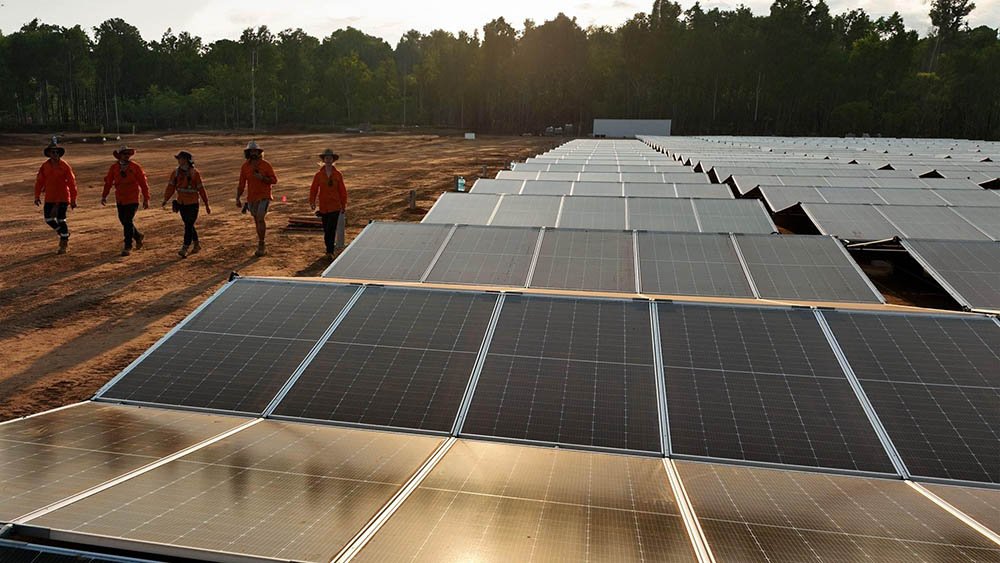The transformative potential of renewable energy extends far beyond the environmental benefits it’s widely recognised for. It holds a promise, a beacon of hope for community development that can fundamentally alter the socio-economic landscape of regions around the globe. This article aims to delve into the heart of this transformation, exploring the social impact of renewable energy, celebrating successful projects, and discussing technological innovations. Each of these elements plays a crucial role in empowering communities, making renewable energy not just a tool for sustainability, but a catalyst for change.
Table of Contents
Understanding the Social Impact of Renewable Energy
Renewable energy projects bring more to the table than just clean power. They’re a source of job creation, providing new opportunities in both the construction and maintenance of renewable energy installations. This employment boost is particularly significant in underserved communities, where job opportunities may be scarce. Beyond employment, reliable access to power can revolutionise healthcare and education in these areas. Clinics can operate more effectively with consistent electricity, and children can study after dark, opening doors to a brighter future.
Bethel Tarekegne, an industry expert, emphasises the importance of integrating renewable energy projects within existing community structures, “Energy communities are at least partly defined by the socio-economic and cultural legacies of coal plants in the community. People are already there. So instead of starting fresh elsewhere, we want to help make connections and ease uncertainty during what can be significant changes.” This perspective highlights the need for renewable energy initiatives to be mindful of the communities they aim to serve, ensuring that the transition to clean energy is inclusive and beneficial for all.
Empowerment in Action
One organisation that embodies the empowerment potential of renewable energy is Grid Alternatives. This nonprofit brings together community partners, volunteers, and job trainees to implement solar power and energy efficiency for underserved communities. Their projects demonstrate how renewable energy can empower people, providing not just electricity, but hope and opportunity. Testimonials from community members who have benefited from Grid Alternatives’ projects highlight the personal impact of these initiatives, from reduced energy bills to the pride of contributing to a sustainable future.
The data backs up these stories, with significant job creation and energy savings reported in communities where Grid Alternatives has been active. These projects not only provide immediate benefits but also equip individuals with skills and experience in the growing renewable energy sector, offering a pathway out of poverty for many. The success of Grid Alternatives illustrates the potential of renewable energy projects to uplift entire communities, providing a model for others to follow.

Lighting the Way
Another beacon of hope in the renewable energy landscape is Barefoot College. This international nonprofit focuses on empowering rural communities through training in solar engineering, among other initiatives. What sets Barefoot College apart is its focus on women, recognising their pivotal role in community development. By training women as solar engineers, Barefoot College is not just providing skills; it’s challenging gender norms and empowering women to take leadership roles in their communities.
The stories of these women, often from very traditional backgrounds, are nothing short of inspiring. Returning to their villages as trained solar engineers, they become agents of change, bringing light and hope to their communities. Barefoot College’s innovative approach to education and sustainability highlights the transformative power of renewable energy, not just in terms of infrastructure, but in human potential.
Technological Breakthroughs
The impact of renewable energy on communities is significantly amplified by technological innovations. Recent advancements in solar technology, such as microgrids and portable solar systems, are making renewable energy more accessible and effective, even in the most remote or underserved areas. These innovations allow for tailored solutions that can meet the unique needs of different communities, overcoming logistical and infrastructural barriers that have historically limited access to clean energy.
In the realm of solar technology innovation, 5B stands out for its contributions to making solar energy deployment faster, more cost-effective, safer, and accessible. Founded by solar engineers Chris McGrath and Eden Tehan, 5B has revolutionised the solar energy landscape with its 5B Maverick technology. This prefabricated, pre-wired ground mount technology allows for rapid deployment by a small crew, significantly reducing the time and cost associated with traditional solar projects.
A testament to its innovative approach, 5B has successfully deployed its latest generation 5B Maverick in remote Indigenous communities, including the cyclone-prone Wurrumiyanga community in Australia’s Northern Territory. The new 5B Maverick is wind-rated to withstand speeds up to 72 metres per second, showcasing its exceptional resilience in extreme weather conditions. This capability is crucial for ensuring continuous, reliable power in areas most vulnerable to climate impacts.
Moreover, the deployment of the 5B Maverick in locations like Timber Creek and Borroloola demonstrates its robustness. The Borroloola solar farm, in particular, located adjacent to the Gulf of Carpentaria, has withstood the forces of two significant cyclones—Cyclone Trevor and Cyclone Owen. This resilience underscores the critical role of durable and reliable technology in sustaining power supply and supporting community resilience in vulnerable regions.
Renewable Energy Empowering Communities
The versatility and adaptability of renewable energy solutions are vividly illustrated in success stories from around the world. From solar-powered water purification systems in Africa to wind farms in rural Asia, these projects are tailored to meet the unique needs and challenges of each community. What unites them is their transformative impact, providing not just energy, but a foundation for sustainable development.
In Latin America, for example, small-scale hydroelectric projects have revitalised local economies, supporting agriculture and small businesses. In the Pacific Islands, solar power has brought reliable electricity to remote villages for the first time, opening up new educational and economic opportunities. These stories underscore the potential of renewable energy to empower communities globally, offering a blueprint for sustainable development that can be adapted to diverse contexts.
From Financial Hurdles to Technical Barriers
Adopting renewable energy is not without its challenges. Financial hurdles, technical barriers, and a lack of awareness can all impede progress. However, communities around the world are finding innovative solutions to these obstacles, demonstrating resilience and creativity in the face of adversity. By leveraging community resources, forming partnerships, and accessing funding from a variety of sources, these projects are overcoming the barriers to renewable energy adoption.
One common strategy is the use of community-based financing models, which allow residents to invest in and benefit from local renewable energy projects. Technical training and education programs also play a crucial role, equipping community members with the skills needed to maintain and manage renewable energy installations. These strategies not only address immediate challenges but also build long-term capacity within communities, ensuring the sustainability of renewable energy projects.
Innovations Shaping the Future of Community Energy
Looking to the future, emerging trends and technologies in renewable energy hold great promise for further empowering communities. Innovations in energy storage, smart grid technology, and decentralised energy systems are poised to make renewable energy more reliable, efficient, and accessible. These advancements could revolutionise the way communities generate, store, and use energy, opening up new possibilities for sustainable development.
Jen Yoshimura, an industry expert, highlights the importance of community engagement in these initiatives, “Working with communities requires cultural awareness and the ability to listen, learn, and adapt in developing and building relationships and trust. We need to be flexible and agile, meeting communities where they are and moving at the pace they need when aligning technical analysis with community goals.” This approach ensures that innovations in renewable energy are tailored to meet the specific needs of communities, fostering a sustainable future for all.
A Call to Action for Sustainable Community Development
The journey towards sustainable community development through renewable energy is both challenging and rewarding. The stories, innovations, and strategies discussed in this article highlight the incredible potential of renewable energy to empower communities, transform lives, and pave the way for a sustainable future. But realising this potential requires action from all of us.
Whether through advocacy, volunteering, or supporting renewable energy initiatives in our own communities, each of us has a role to play. By championing renewable energy, we can contribute to a movement that is not just about saving the planet, but about building a better, more equitable world for everyone. Let’s embrace this opportunity and work together towards a future where every community has access to the empowering potential of renewable energy.










